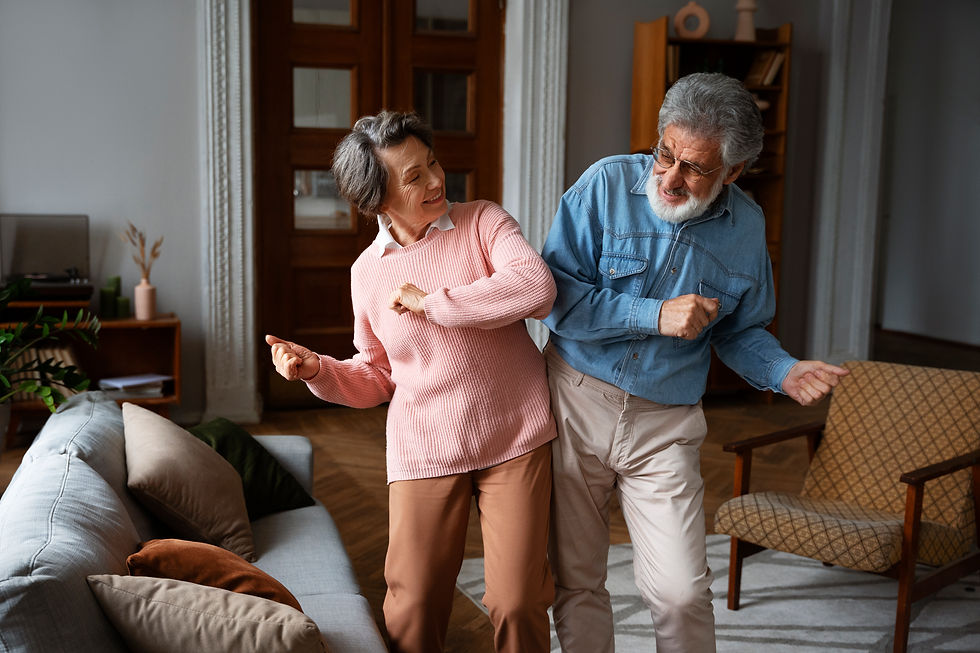Preventing Falls as Seasons Change: Home Safety and Occupational Therapy
- Ashley Rodriguez
- Aug 13
- 3 min read

Falls are a leading cause of injury among older adults, with seasonal changes playing a significant role in increasing risks. Whether it's slippery leaves in autumn, icy sidewalks in winter, springtime clutter, or summer heat causing fatigue, each season introduces unique challenges for senior safety. Fortunately, combining simple home safety strategies with the benefits of occupational therapy can significantly reduce fall risk.
In this blog, we’ll explore how seasonal transitions impact senior fall risks, offer actionable home safety tips, and show how occupational therapy can help older adults stay active and independent year-round.
Understanding Why Seniors Are More Vulnerable to Falls
As people age, they naturally experience changes that affect balance, vision, strength, and reaction time. Common factors contributing to falls in seniors include:
Muscle weakness and joint instability
Poor vision or hearing
Medication side effects (dizziness, drowsiness)
Cognitive decline or slower reflexes
Chronic health conditions like arthritis or neuropathy
Seasonal transitions often amplify these risks. For example, low lighting during early winter evenings can impair vision, while pollen season in spring may increase fatigue and dizziness due to allergies or antihistamines.
Seasonal Home Safety Tips for Fall Prevention
Preventing falls starts at home. With each season, specific hazards emerge. Here’s a seasonal breakdown of what to watch for and how to adapt to the home environment:
Fall
Clear fallen leaves from walkways regularly, especially if they become wet and slippery.
Ensure adequate lighting indoors as daylight hours begin to shrink.
Remove rugs or runners that could curl or shift on hardwood or tile floors.
Begin weatherproofing doorways and steps in preparation for winter.
Winter
Apply salt or sand on icy porches, driveways, and walkways.
Install non-slip mats inside doorways to catch snow or water.
Ensure indoor heating is sufficient to prevent stiffness or shivering, which can affect mobility.
Encourage use of stable footwear with rubber soles.
Spring
Remove clutter and tripping hazards like seasonal decor or misplaced furniture from high-traffic areas.
Check for water damage or mold that may have developed over the winter, as slippery surfaces increase fall risk.
Replace or fix loose railings or steps that may have deteriorated over colder months.
Summer
Prevent dehydration, which can cause dizziness, by encouraging seniors to drink plenty of fluids.
Use fans or air conditioners to reduce fatigue due to excessive heat.
Encourage light physical activity during cooler morning or evening hours to maintain strength and balance.
The Role of Occupational Therapy in Fall Prevention
While modifying the home environment is crucial, occupational therapy (OT) plays a vital role in empowering seniors with the skills and strategies to prevent falls and maintain independence.
1. Personalized Fall Risk Assessments
Occupational therapists assess a senior’s unique fall risk factors, including strength, mobility, medication usage, and home environment. This results in a
customized action plan.
2. Strength and Balance Training
Through guided exercises, occupational therapists help clients improve core stability, leg strength, and coordination, all critical in reducing falls.
3. Functional Home Modifications
An OT can recommend and help implement:
Grab bars in the bathroom
Raised toilet seats
Bed and chair lifts
Adaptive lighting solutions
These changes create a safer living environment without compromising comfort.
4. Safe Movement Techniques
Occupational therapists teach safe ways to transfer from bed to chair, navigate stairs, or reach for items in high places, helping seniors build habits that reduce risk.
5. Assistive Device Training
If a senior uses a cane, walker, or rollator, occupational therapists ensure they are using the right equipment properly and can navigate various surfaces safely.
Tips for Family Members and Caregivers
If you’re caring for an older loved one, you play a key role in preventing falls, especially during times of seasonal transition.
Check in regularly to inspect the home for seasonal hazards.
Schedule routine vision and hearing checks.
Encourage your loved one to stay physically active and socially engaged.
Consider booking a home safety evaluation with an occupational therapist.
Be patient and encouraging; fall prevention is about building confidence, not instilling fear.
Final Thoughts
Falls are not an inevitable part of aging. By proactively adjusting home environments with the seasons and incorporating occupational therapy into a senior’s care plan, it's possible to enhance safety, confidence, and overall well-being. Prevention doesn’t have to be complicated, it’s about thoughtful adjustments, professional support, and empowering seniors to live life to the fullest.
Need Help Keeping a Loved One Safe at Home?
At Coastal Home Rehab, we specialize in in-home occupational therapy services for seniors across New Jersey. Our experienced therapists provide personalized evaluations, home modifications, and fall prevention programs, all in the comfort of your loved one’s home.
Contact us today to schedule a home safety assessment and take the first step toward a safer, more confident lifestyle.




Comments